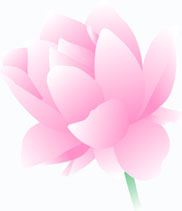PADMA PURANA |
|
 |
Significance of Pushkara Tirtha and Muni Ashramas in the vicinity Materialised from Bhagavan Vishnu’s navel, a Lotus stem sprouted and on top of the lotus was seated Brahma; Pushkar Tirth is stated to be the personification of the Lotus top. Brahma decided to perform an unprecedented Maha Yagna on the banks of Pushkara Tirtha, which was situated not far from Chandra River and Saraswati River. The inhabitants of the Pushkar from times immemorial were Brahma Bhaktas in various disciplines of Bhakti like Manasa, Vaachika and Kayaka formats as also of Loukika, Vaidika and Adhyatmika methods. |
Manasa Bhakti seeking to hold Buddhi by way of ‘Dhyana’ (meditation) and ‘Dharana’ (sustenance) was very dear to Brahma Deva. Mantra Japa and Veda Paatha known as Vaachika Bhakti were equally dear to Brahma Deva. Kayaka Bhakti encompasses performance of Vratas underlining mental restraints and physical Controls, Upavasas (fastings), ‘Niyamas’or the Strict Regime of Regulations, Sacrifices, etc. Brahma Deva liked this kind of Bhakti also as it involved difficult means of penance. Brahma liked Ritualistic Bhakti in a typically Loukika manner by worshipping him with milk, Deepa and Dhupa, Kusha, water, chandana, ornaments, precious metals and stones, nrithya, Vaadhya, Sangeeta, Naivedya of Bhakshya, Bhojya and such other food specialities. Brahma is also pleased with Vaidika Bhakti by way of Veda ‘Pathana’ (recitation), Manana (Cogitation) and Shravana (Listening) and Agni-Sambandhi Karyas.Adyatmika Bhakti of Saankhyaja or Yogika methods viz. Saankya Shastra based on Tatva Gyana ;or Yoga Practice of Yama, Niyama, Pranayama, Pratyahara, Dharana and Samadhi are yet other methods of seeking Brahma. Thus Bhaktas observing one form of Bhakti or another with the underlining touchstones of sincerity and total dedication are all dear to Brahma, be it a man, woman, or of any Varnas or species! When Brahma commenced the Maha Yagna, all the Saptarishis bent down their heads to Brahma’s feet; twelve Adityas, Eleven Rudras, two Ashvani Kumars, Eight Vasus, Forty Seven Marudganas were all present in reverence. Maha Nagas like Vasuki, Tarkshya, Arishtanemi, Garuda, Aruna and Vinati Kumars were there too.Daitya, Danava and Rakshasas were in full attendance. Maha Narayana Himself was present and requested Brahma to initiate the proceedings.Maha Deva too arrived at the right time. Danavas assured the Tri Murthis that during the Yagna, there would not be any bickerings with Devas! Brahma was particularly happy to hear the declaration. Meanwhile, whoever witnessed one’s own reflection in the sacred waters of Pushkarini looked quite handsome and the Sages stated that Pushkarini Tirtha was ‘Mukha Darshan Tirtha’. After taking bath in the Tirtha, the ‘Tapasvis’performed Agni Karyas and proclaimed that the Sarovar was the ‘Sreshtha Pushkar’. As Brahmanas received a number of gifts at the Yagna, quite a few of them desired to take bath in Saraswati River; many of them stayed on the banks of the River where Swadhyaya Mantras resounded. In the Pushkara Tirtha, the River Sarasvati surged in Five ‘Dharas’ (Streams) viz. Subrabha, Kanchana, Praachi, Nanda and Vishaal. In the Yagna of Brahma, Brahmanas fulfilled every wish of theirs including those which were subdued in the corners of their hearts and minds. As Sarasvati arrived at the Yagna Region, the happiness of Brahmanas and others was maximum; when Devas were present, Gandahravas sang and Apsaras danced, then the atmosphere was sublime! A srong belief till date is that whoever dies at the banks of the River in the Pushkar Tirtha would have no birth again. Whoever performed Suvarna Daana with Sesame seeds and water was as good as Meru Parvata Daana itself! Again Shraddhas performed at the Pushkar Tirtha tantamount to attainment of salvation by twenty one previous generations. This Tirtha is in fact the most beloved one to Pitras as Pindapradaan would yield complete Satisfaction to them. It is further believed that bathing in the evening/nights in the Pushkar and giving away ‘daan’, bestowed lasting happiness and contentment. After the Yagna by Brahma, River Saraswati disappeared in its full form and travelled west ward into the Sea, but reappeared as River Nanda. While describing the ‘Mahatmya’ of Pushkar Kshetra, Sage Pulastya explained that there were three parts viz. Jyeshtha Pushkar, Madhyama Pushkar and Kanishtha Pushkar. Pushkar Tirtha was full of countless Rishis spread over a large area of two and half Yojanas of length and half Yojana of width. Even a single entry into the Tirtha bestows the result of performing Rajasuya and Ashwamedha Yagnas. On Chaitra Shukla Chaturdasi, it is believed that Brahma, Devas, Maharshis and Siddhas as well as Pitras descend from their respective Regions. Worship of Devasvas and Pitras by way of Tarpanas and Pujas on this day, especially at Jyeshtha Pushkara would prove highly fruitful. In fact, during the Pratahkal, Madhyahna and Sayamkaal on any day, the belief is that ten thousand crores of Devas especially, Adityas, Vasus, Rudras, Saandhyas, Marudganas, Gandharvas, and Apasaras turn out here. Even a sincere and purified thought in mind to travel to Pushkar could vanish. sins, and staying there for as many days as possible would yield proportionate fruits. Organising bhojans at Pushkar as charity would result in immense and far reaching returns. Bathing at Brahma Pushkar Sarovar Tirtha and worship at Adi Varaha Temple as well as at the unique Brahma Temple are to provide enormous advantages, especially on Kartika Purnima days. |
|
| Padma Purana Home | Next: Agastya Muni dries up the Ocean and enables to destroy the demon Kalakeya |
Back to the News Page